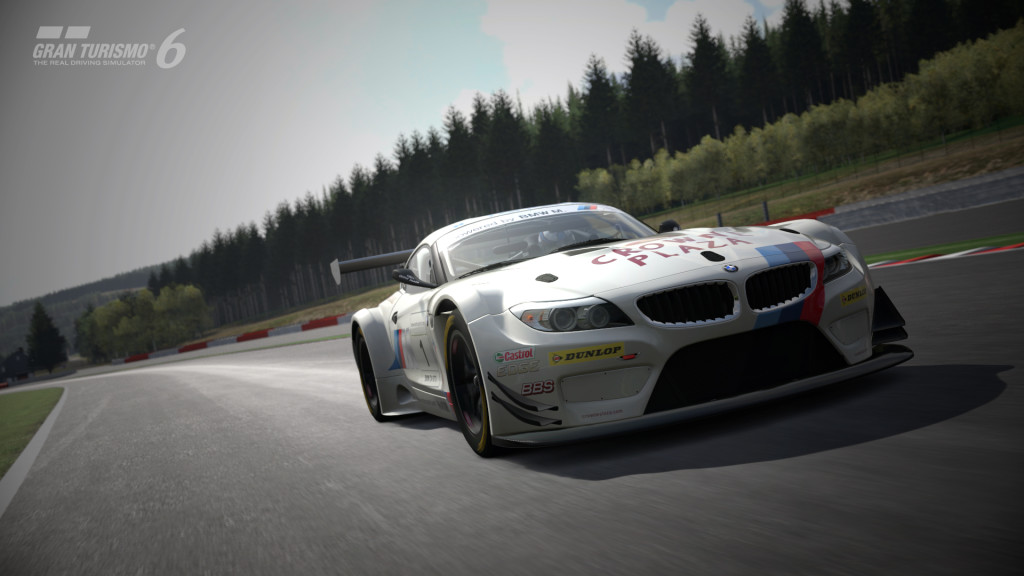Recently, the racing game in every form consumes most of my gaming time. Ridge Racer started it, and now I venture into more and more different racing experiences, trying to see and examine their subtle nuances and character. From Project Gotham Racing (which I talked about many times before) to whatever European racing game from Codemasters (think DIRT, F1, and GRID), I’ve tried them all. Perhaps that short time did not allow me to grasp their subtle nuances, but I believe there’s a clear difference between the games I like and the games I dislike. Handling’s everything in racing games, and if that system does not force you to learn it, then what’s the point? In that respect, there’s a clear difference between most games coming out from Japan, and most games coming out in Europe and the Americas. Frankly, you wouldn’t know it from a cursory glance, but just a little time with the games will tell you the focus.

To point out the first obvious difference, most Japanese games place a high priority on usability rather than features. Do different cars drive differently? Not necessarily so. As much as Gran Turismo replicates the idea of playing thousands of cars. common and prototype, you couldn’t say that the handling differs so drastically between them. Note that Gran Turismo intends to recreate the experience of driving in a simulation way, and the Japanese pursuit of Yūgen, a subtle profundity and attention to detail. They refine and refine until they reach that point that exemplifies C, a sophisticated unnatural product with hidden depth. It does explain the almost fetishistic attention to the design of every car in the series. Yet, somehow, the game holds both arcade and simulation roots, depending on your preference. I imagine the pursuit of simplicity, in that respect, explains why arcade controls hold so much hidden depth rather than outright complexity.
Western games do not do this. Instead, they try their best to recreate the feeling of racing as directly as possible; it does explain why almost every racing game wants you to play with a racing wheel and not a controller. Even Project Gotham Racing, a game that tries for a mix between simulation and arcade, contains some of the most complicated car controls that I dare witness in a game. Good luck making those ninety degree turns the first time out! Yet, unlike other genres of games, this pursuit of realism enhances the experience of playing the game. Each car usually represents different characteristics of real cars, and they show this accordingly. A Ferrari will start slow out the gate and emerge as a powerhouse; it will brake slowly yet powerslide easily. The vehicle controls like a caged beast, yet you can master it.

Unlike Ridge Racer, changing to a more powerful and higher class car won’t yield an instant upgrade to your abilities. Picking a new car means adopting a new handling style entirely, which may or may not amend itself to your particular style. Let me tell you, switching from a car that grips the road as if its life depended on it, versus a car that slides at the very light touch of the emergency brake, changes your approach to each and every course. That constant cyclical approach – learn a car, learn the tracks with that car, get a better car, learn new car, learn tracks again – remains the backbone of nearly every single-player racing experience ever, but the difference remains much more pronounced in the Western versions.
I should make a distinct note here for the European racing team of Codemasters, whose games simply fail to delight me in every aspect. I’m not sure why, but I find none of their games satisfying in the least. They retain the “trial and error’ approach of the previous, but the physics always manage to feel strange and off-kilter just enough to throw me off my game. I imagine I need a steering wheel, and that will happen no time soon.
In either case, the different approaches appeal to different player bases – certainly, we don’t divide them by geography, but by personal taste. As in the above, I just seriously don’t enjoy the Codemasters approach; others may lambaste me, such as that reviewer on Eurogamer who gives every European racing game a high rank, but that’s just a matter of subjective taste. I find racing a difficult genre on which to nail what makes a mechanic work or not. Any amount of hard work will make something intuitive and/or easy, but where do you draw the line between “good” and “bad” when it comes to a race game? The single-player campaign represents one side of the coin, but the multiplayer the purest form of success in that regard. Can it sustain a competitive scene, or a intriguing set of systems that beg for racing perfection? That remains the goal, and I think both sides of the globe solved this problem in their own way.
Perhaps it comes from the cognitive limits of the individual player. Honestly, I would rather learn the nuance of a few well-rounded mechanics than the interesting complexities of a million at once. Adding complexity does not add depth, and vice versa. The difference between a simple interfaces with great depth and a complex interface with a shallow pool remains great. Distinguishing between the two becomes a harder endeavor. A boorish generalization would put Western racing games in the latter category, while Japanese games in the former. “Easy to learn, tough to master”, or would you rather “hard to learn, difficult to master?”
In both cases, though, the design of said games and their interfaces design forms much of their backbone. Focus the player on the important parts, and they will learn what they need to learn. My Project Gotham Racing experience, documented in two places, shows a problem of focus on the design of Bizarre Creations – PGR demonstrates the issue of expectation combined with information overload. There’s nuance, sure, but discovering that nuance means beating your head against the wall repeatedly – or your car into a road barrier. Neither case constitutes something fun or interesting, as it’s difficult to tell what you did wrong from what you did right, nor does the game give anything but the basic (and unhelpful) feedback of failure. Once you cross the hump, that becomes less of a problem, but the complexity (which, honestly, seems unnecessary at a point with two forms of braking used in turn) continues to make this a problem. Cognitive leaks everywhere! Concentration on things you didn’t know were there, nor could know without memorizing, to a degree, a course layout. Add Kudos to the equation (with a billion different Tony Hawk’s Pro Skater scoring manipulations) and you just broke someone’s brain. Cognitive drips always happen, no matter how much experience; you’ve just learned to overcome the problems by habit, not through your brain.
Contrast this to Ridge Racer. In practice, the game uses three controls – steering, gas, and braking. Tap the brake or let go of the gas and then punch it while cornering to drift. From there, maniulating the drift requires only a good handling of the control stick and a intuitive knowledge of your car’s cornering radius. Once you learn this relatively simple controls, you simply learn how to avoid losing speed while take corners at high speeds using drifts. More than likely, you’ll never use the brake at all unless you crash. Later games add nitro, speed boosts gained by drifting at high speeds, and that means you’ll gain it without doing something extra on top of what you already did. Learning when to use nitro remains up to the player’s inclination and course knowledge, plus knowing when you can end a boost into a drift to gain extra nitro (called “Ultimate Charge”). None of this presents a huge cognitive problem, as the addition of a nitro meter adds little to your brain’s burden. Plus (as stated earlier), most cars drive the same, with differentiation only between speed and drift type, making the process a matter of aesthetic taste and your racing style. See how it simplifies something complex?
Cognitive leaks occur in most modern game design, to look at the industry in a negative light. Adding stuff does not mean “better game” necessarily. Racing games just highlight this problem due to their purity of form (no independent racing games yet, are there? Or at least good ones. Probably explains a lot). Intuition counts for a lot, and too much information causes overload in our brains. So when do complexity and depth meet? There’s a perfect point, although I imagine we’ll never find this for each individual, but such an ideal becomes the system of refinement in game design (hopefully).
What does the Bible say, though? Let’s take a (seemingly) unrelated example. Acts 16 tells us of Paul’s decision to bring Timothy along:
Paul came also to Derbe and to Lystra. And a disciple was there, named Timothy, the son of a Jewish woman who was a believer, but his father was a Greek, 2 and he was well spoken of by the brethren who were in Lystra and Iconium. 3 Paul wanted this man to go with him; and he took him and circumcised him because of the Jews who were in those parts, for they all knew that his father was a Greek.
Many would call this a sign of intuition, that he merely picked Timothy because God told him. Yet, it seems clear that Paul chose Timothy out of the accumulated wealth of evidence. The gut feeling of bringing this young kid along on missionary journeys wasn’t replaced, but augmented by additional knowledge. Not too much knowledge to make the situation impossible to read, but just enough to make a solid, informed decision on an issue.
Not all the information will always present itself to us; even then, everything inherently involves some form of risk. That’s what makes it all interesting! Games allow you to take risk without fear of ultimate, total failure, but a constant will to succeed within those systems. Good design, as in good decision making, requires a balance of the risks and the rewards, between complexity and simplicity, between shallowness and depth. Knowledge and intuition both play a part, and that part might differ between persons, but that shows us why we have a Church and not a set of individuals.
